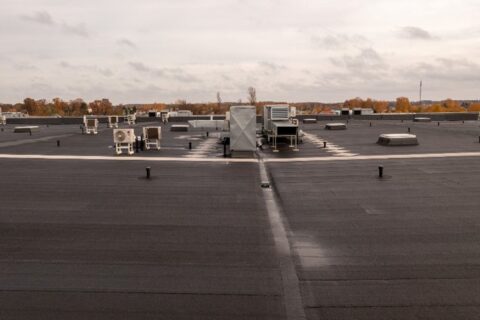Roof Storm Damage Checklist

The Ultimate Checklist For Handling Roof Storm Damage
Roof damage from storms can often be a hidden threat to your home, leading to more significant problems if left unchecked. It’s crucial to remain vigilant and watch for potential signs of damage after each severe weather event. Look for missing shingles, leaks, or any debris that may have accumulated on your roof. This thorough checklist will guide you through the detailed process of assessing storm damage, including what to look for, how to document any issues, and the necessary steps to take to protect your home from further harm. Regular maintenance and timely repairs can save you from costly repairs. Stay proactive to ensure your home remains safe and secure!
Understanding Roof Storm Damage
Storms, including tornadoes, hailstorms, and hurricanes, can cause significant damage to roofs, which is often not immediately visible. This hidden damage can lead to more severe structural problems if left unaddressed, resulting in costly repairs. Here’s what you should look for to assess potential damage after a storm:
Types of Roof Damage
- Wind Damage: High winds can tear shingles off your roof, exposing the underlayment to the elements. Without proper protection, this can lead to leaks and further deterioration of the roof structure. Inspect your roof for any missing shingles or areas where the shingles may have been lifted.
- Hail Damage: Hailstones can create dents in shingles and knock off protective granules that help shield your roof from UV rays and moisture. This degradation can compromise the integrity of the shingles, leading to leaks. Check for any visible dents or pockmarks on the surface of your shingles, especially after a hailstorm.
- Water Damage: Poor drainage from gutters or downspouts can lead to standing water that seeps under shingles. Over time, this can cause rot in the roofing materials and contribute to mold growth inside your home. Ensure your gutters are clear of debris, and check for any water pooling on the roof after heavy rain.
- Debris Damage: Falling branches and other debris can impact and damage roof surfaces, leading to punctures or scratches that can expose the roofing material to moisture. It’s important to clear your roof of any debris after a storm and inspect for signs of damage to shingles or structural components.
By being proactive and aware of these types of damage, you can help protect your roof and ensure it remains in good condition for years. Regular inspections, especially after severe weather events, are key to maintaining the health and longevity of your roofing system.
Steps to Take After a Storm
Assessing your roof for damage after a storm is crucial to preventing further issues. Taking immediate action can help mitigate costs and preserve the integrity of your home. In this section, we’ll outline the essential steps to evaluate and effectively address storm-related roof damage.
- Ensure Safety First
- Avoid going onto the roof yourself.
- Check surroundings for downed power lines or unstable structures.
- Conduct a Visual Inspection
- Walk around your home to check for any visible roof damage.
- Look for missing, curled, or damaged shingles.
- Use binoculars for a better view without needing to climb.
- Inspect Gutters and Vents
- Check gutters for dents and ensure they are not clogged.
- Look at roof accessories like vents and overhangs for damage.
- Examine the Attic and Ceilings
- Inspect the attic for any leaks or water spots.
- Check ceilings and light fixtures for signs of moisture.
- Document Everything
- Take notes and photos of all visible damage.
- Keep this documentation for insurance claims and repair estimates.
Hiring a Professional Roofing Contractor
When you choose to hire a professional roofing contractor, there are various things to keep in mind. From why it’s important to get professional help to how to choose the right contractor. Explore what you need to know about hiring a professional roofing contractor:
Importance of Professional Help
- Professionals have the expertise to assess and repair damage safely.
- They provide a more accurate estimate of repair costs.
How to Choose the Right Contractor
- Ensure they are licensed and insured.
- Look for reviews and ask for references.
- Verify they offer a solid warranty on repairs.
Communicating with Your Insurance Provider
After experiencing roof storm damage, open and effective communication with your insurance provider is crucial. This process involves understanding your policy details and documenting the damage clearly. With timely and well-prepared interactions, you can facilitate smoother claims and ensure an efficient recovery.
File a Claim
- Contact your insurance provider as soon as possible.
- Provide them with your documentation and photos.
Work with Adjusters
- Cooperate with any adjusters they may send to assess the damage.
- Ensure you understand your policy and what’s covered.
Contact Us Today
Storm damage can compromise the safety and integrity of your home. Following this checklist ensures you’re proactive in identifying and addressing potential issues. For a professional inspection and peace of mind, contact Bryan Exteriors. We offer comprehensive roofing assessments and repairs to keep your home safe and sound. Schedule your free estimate today through our website, Bryan Exteriors.


